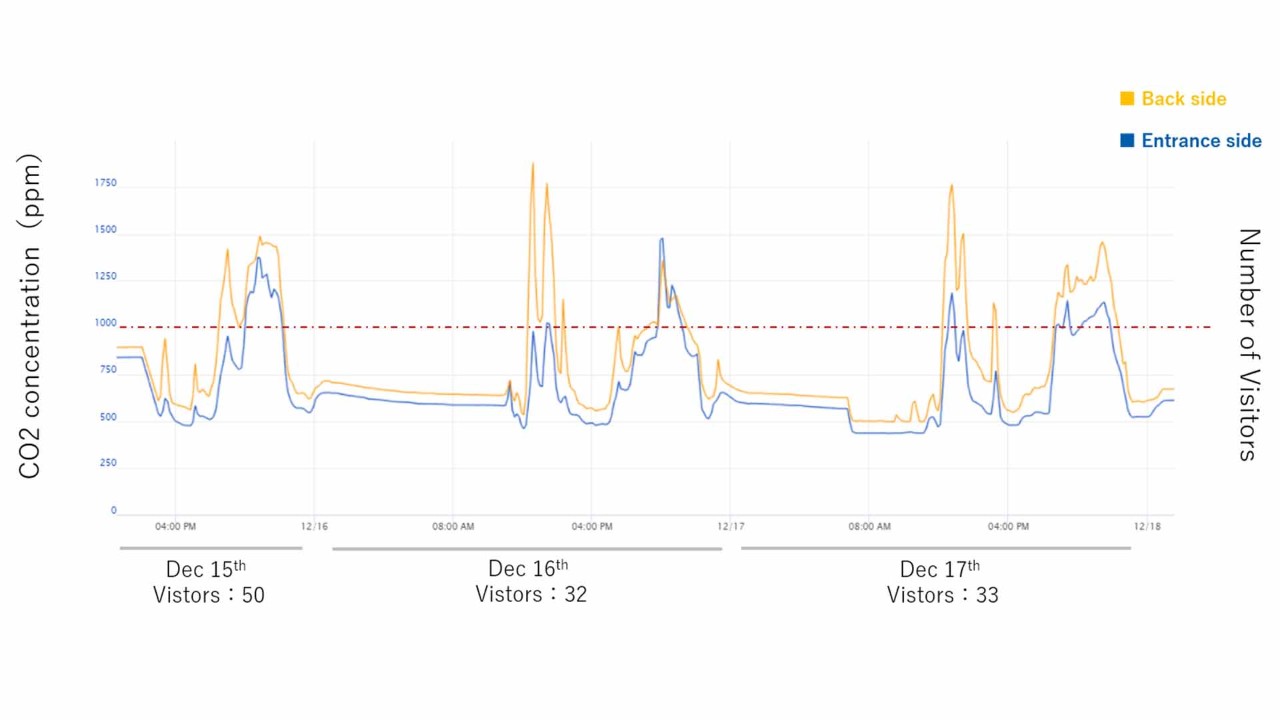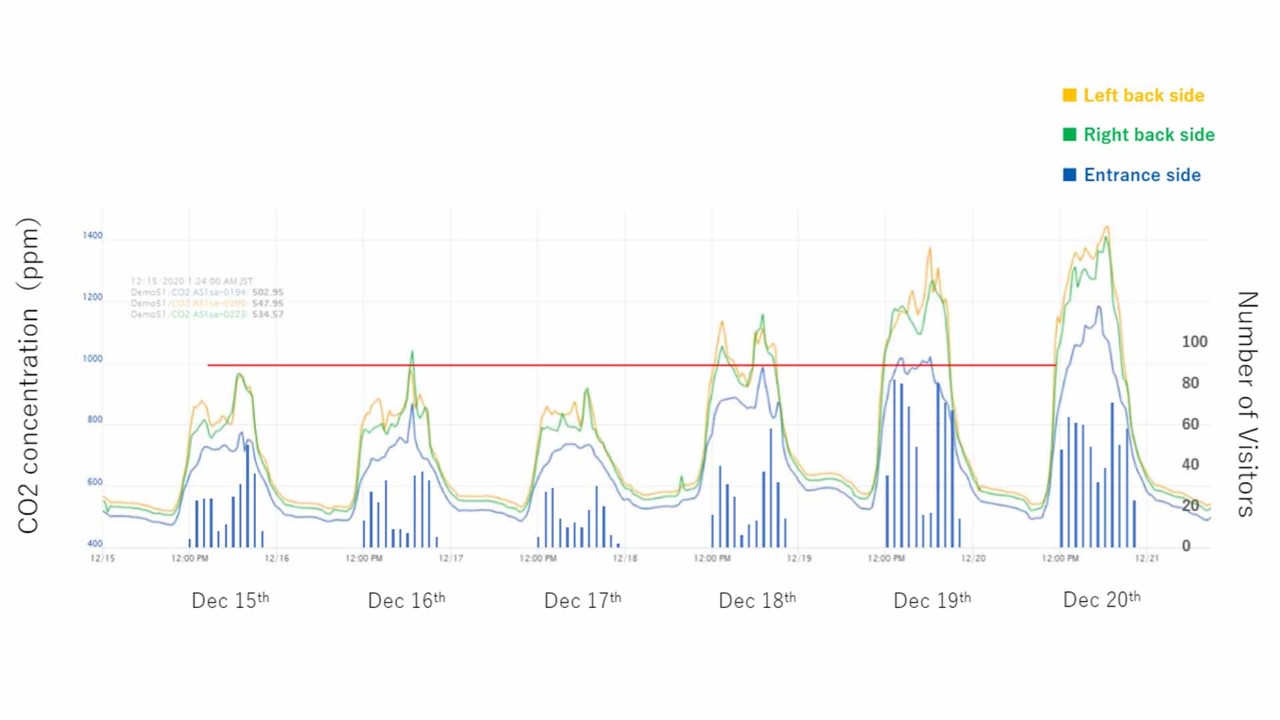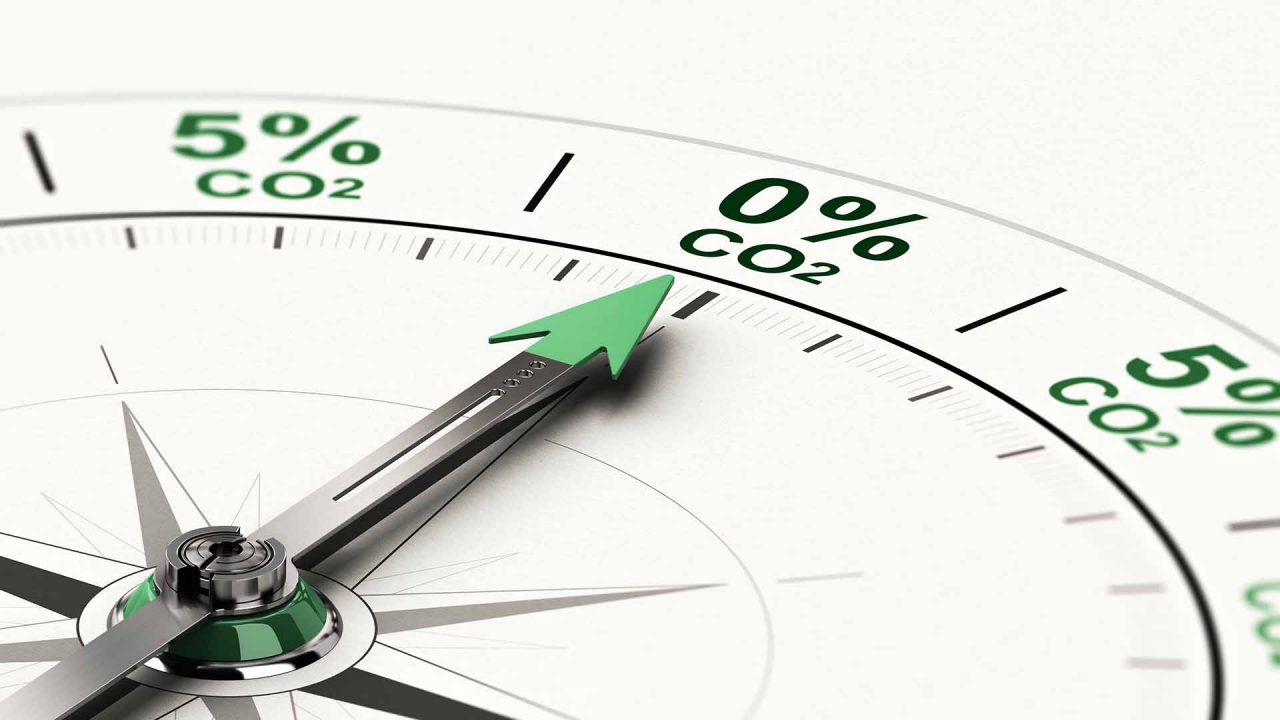CO2 Monitoring in indoor space
In recent years, ventilation has gained even greater importance as a way of preventing the spread of COVID-19. However, air cannot be seen with the naked eye. That's why we used measured CO2 concentration in actual restaurants to visualize air quality and determine if the level of ventilation was as thorough as the restaurant owners believed.
CO2 Sensors
Is your ventilation really as thorough as you think it is?
Here are the results of actual CO2 concentration measurements at two restaurants (Figure 1 and 2). On busy days and during busy hours, the CO2 levels greatly exceed 1000ppm(*). What's more, areas far from the entrance were not well ventilated, resulting in high CO2 levels. As you can see, even if you use ventilation systems, the level of ventilation may not be sufficient. This could increase the risk of disease spread and produce a less comfortable environment.
[Notes]
* In Japan, Building Management Act guidelines stipulate that indoor CO2 concentrations should be kept below 1000ppm.
Measurement results from Restaurant A
Concentrations of over 1,000 ppm were observed during lunch and dinner hours. The CO2 levels were particularly high in the rear of the restaurant (yellow). From this, it can be inferred that the air circulation there is poorer than in the area in front of the stairwell.

Figure 1. CO2 concentration at restaurant A
Measurement results from Restaurant B
On weekdays, the carbon dioxide concentration generally remained below 1,000 ppm (red line). During busy hours from Friday to Sunday, carbon dioxide concentrations generally exceeded 1,000 ppm in some locations from lunchtime onwards. This indicated a great deal of room for improvement in the restaurant's ventilation. Furthermore, measurements clearly showed that ventilation levels were higher near the entrance (blue) than near the rear of the restaurant (yellow/green). The results indicated that carbon dioxide levels outside the restaurant were low, and that areas near the exterior of the restaurant were well-ventilated.

Figure 2. CO2 concentration at restaurant B
It is important to assess air quality and provide proper ventilation.
As you can see from the restaurant measurement results, even when ventilation measures were being taken, they were not enough to keep the restaurants properly ventilated when they were crowded. Air cannot be seen, so ventilation measures are often inadequate. It is therefore important to visualize the air and then use this information to create comfortable, safe spaces. For example, ventilation can be performed efficiently by opening windows and doors at opposite corners of rooms, or by installing a circulator or fan to blow air out of rooms. Appropriate ventilation measures can be implemented even when rooms are crowded by using air quality sensors to visualize the air.
Recently, in order to meet the needs of customers who want to enjoy peace of mind while in commercial establishments, there has been a growing movement of installing air quality sensors that use CO2 concentration as an indicator of air quality.
Senseair's NDIR type CO2 sensors are compact and highly accurate yet consume extremely little power, so they provide long life cycles for battery-driven air quality sensors and help make it possible to accurately measure residential CO2 concentration.
Please refer to ”What makes Senseair different?”
About Senseair
Senseair, which became a member of the Asahi Kasei Microdevices (AKM) Group in 2018, is a provider of gas sensors using NDIR: Non-Dispersive InfraRed technology. Our goal is to constantly develop and mass-produce new gas sensor technologies.











